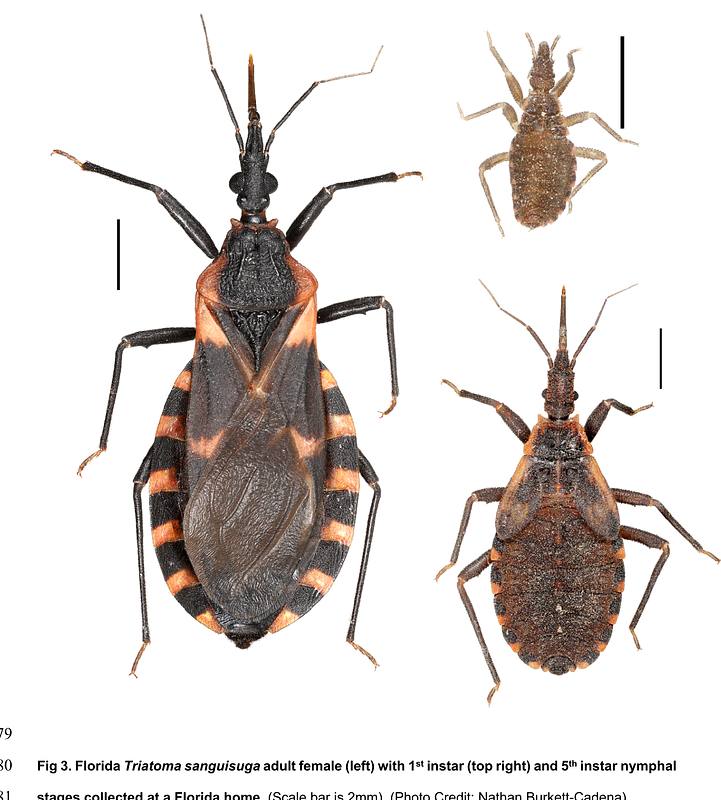Field Evidence of Trypanosoma cruzi Infection, Diverse Host Use and Invasion of Human Dwellings by the Chagas Disease Vector in Florida, USA

Field Evidence of Trypanosoma cruzi Infection, Diverse Host Use and Invasion of Human Dwellings by the Chagas Disease Vector in Florida, USA
Beatty, N.; Bhosale, C. R.; White, Z. S.; Torhorst, C. W.; Wilson, K. N.; Dorleans, R.; Stenn, T. M. S.; Killets, K. C.; Curtis-Robles, R.; Burkett-Cadena, N.; Novakova, E.; Hamer, G. L.; Hamer, S. A.; Wisely, S. M.
AbstractBackground: Triatomine bugs (Hemiptera, Reduviidae, Triatominae) are blood-sucking vectors of the protozoan parasite, Trypanosoma cruzi, which causes Chagas disease, a significant source of human morbidity and mortality in the Americas. Autochthonous transmission of Chagas disease in the United States is considered rare, despite evidence of Triatoma species harboring T. cruzi, invading homes, and biting occupants. In the southeastern United States, Triatoma sanguisuga is considered common, yet its distribution, host use, and T. cruzi infection are practically unknown in this region. Methodology/Principle Findings: Using field sampling and community science programs from 2013 to 2023, we collected triatomines from peridomestic and domestic settings, identified them to species, analyzed for bloodmeals, and screened for T. cruzi infection and Discrete Typing Units (DTUs) TcI - TcVI utilizing molecular techniques. Triatoma sanguisuga (n=310) were collected from 23 counties throughout the state, particularly in northern and central Florida. More than one third (34.6%) of T. sanguisuga were found inside a human dwelling, and 39.2% were collected by community members. T. cruzi infection was observed in 29.5% (88/298) of tested triatomines, with infection found in 12 of the 23 counties where triatomines had been collected. DTU-typing was successful for 47 of the T. cruzi-positive triatomines: 74.5% were infected with DTU TcI, 21.3% were infected with DTU TcIV, and 4.3% were co-infected with TcI and TcIV. Bloodmeal analysis of 144 T. sanguisuga found broad host use, including mammals (60%), ectothermic vertebrates (37%), and cockroaches (2.5%). Human blood meals contributed nearly a quarter (23%) of bloodmeals, indicating significant vector-human contact. Conclusion/Significance: Our field data from Florida demonstrate that T. sanguisuga is present near, and sometimes in, human dwellings, feeds upon humans, and is infected with multiple DTUs of T. cruzi. This indicates that the environment in the southeastern United States is suitable for autochthonous transmission of Chagas disease or that the human risk for T. cruzi infection is possible. The roles of ectotherms in T. sanguisuga and T. cruzi ecology also warrant further investigation.